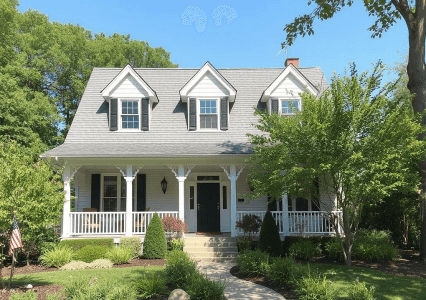
The intersection of technology and architecture has given rise to the concept of smart buildings, which leverage advanced technologies to enhance the functionality, efficiency, and sustainability of the built environment. Here are some key aspects of smart buildings:
- Integrated Systems: Smart buildings integrate various building systems and technologies, including HVAC (Heating, Ventilation, and Air Conditioning), lighting, security, access control, energy management, and communication systems. These systems are interconnected and controlled through a centralized building management system (BMS) or Internet of Things (IoT) platform, allowing for seamless operation and coordination.
- Sensors and IoT Devices: Smart buildings are equipped with sensors and IoT devices that monitor environmental conditions, occupancy levels, energy consumption, and other parameters in real-time. These sensors collect data and transmit it to the BMS or cloud-based platforms for analysis and decision-making. Common sensors used in smart buildings include temperature sensors, motion detectors, occupancy sensors, and CO2 sensors.
- Data Analytics and Artificial Intelligence (AI): Data analytics and AI technologies are used to analyze the vast amounts of data collected by sensors and IoT devices in smart buildings. AI algorithms can identify patterns, trends, and anomalies in building performance, optimize energy usage, predict maintenance needs, and improve occupant comfort and productivity. Machine learning algorithms can also continuously adapt and optimize building operations based on changing conditions and user preferences.
- Energy Efficiency: Smart buildings prioritize energy efficiency and sustainability by optimizing energy usage, reducing waste, and minimizing environmental impact. Energy management systems (EMS) and advanced controls regulate heating, cooling, lighting, and ventilation based on occupancy patterns, weather forecasts, and energy tariffs. Smart meters and sub-metering systems track energy consumption in real-time, allowing building managers to identify energy-saving opportunities and implement targeted strategies for reducing energy costs and carbon emissions.
- Occupant Comfort and Well-being: Smart buildings prioritize occupant comfort, health, and well-being by providing personalized environments and amenities. Indoor environmental quality (IEQ) sensors monitor air quality, temperature, humidity, and lighting levels, adjusting conditions to optimize comfort and productivity. Smart lighting systems with tunable LEDs can mimic natural daylighting patterns and support circadian rhythms, enhancing occupant health and wellness.
- Safety and Security: Smart buildings enhance safety and security through advanced surveillance, access control, and emergency response systems. Video surveillance cameras, motion detectors, and biometric scanners monitor building perimeters and interior spaces, deterring unauthorized access and detecting security threats in real-time. Integrated emergency communication systems provide timely alerts and instructions to occupants during emergencies, facilitating safe evacuation and response procedures.
- Adaptive and Resilient Design: Smart buildings embrace adaptive and resilient design principles to anticipate and respond to changing environmental conditions, climate risks, and disruptive events. Building envelopes with dynamic shading systems and responsive facades optimize natural daylighting, solar heat gain, and thermal comfort. Smart grid integration and energy storage solutions enhance building resilience to power outages and grid disruptions, ensuring continuous operation and occupant safety.
- User Experience and Interaction: Smart buildings enhance the user experience and interaction through intuitive interfaces, mobile apps, and digital platforms. Occupants can control building systems, access services, and customize their environments through user-friendly interfaces and personalized settings. Interactive displays, wayfinding systems, and digital signage provide information, guidance, and entertainment to occupants, enhancing their overall experience within the built environment.
In summary, smart buildings leverage technology to create intelligent, adaptive, and sustainable environments that prioritize occupant comfort, energy efficiency, safety, and well-being. By integrating advanced systems, sensors, data analytics, and AI, smart buildings offer a holistic approach to building design, operation, and management, shaping the future of architecture and the built environment.


